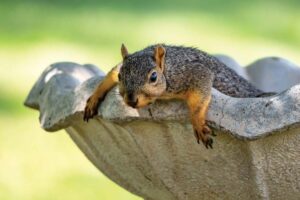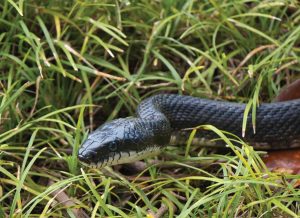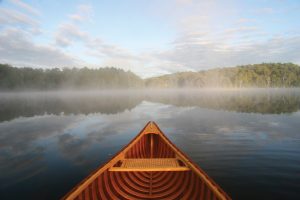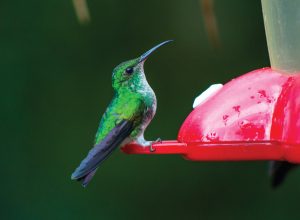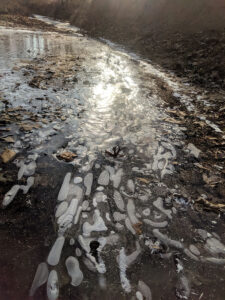
At one point on its path across our land, the water of the Wetweather Creek flows beside an earthen cliff and bounces over cobble within a narrow channel. At this riffle, water constricts and rushes, disallowing ice formation, usually.
I stepped upon the ice atop a deep pool upstream of that frozen riffle. Of course, I had first ascertained that the ice was safe, about five inches thick, judging by the expansion cracks in the clear ice.
But, clear ice means slick ice! After a few tentative steps, and a slip or two, I felt confident. I performed a series of quick steps for momentum and made my boots slide – truly impressive gliding – think Nancy Kerrigan!
From the ice came a loud sound. I stopped, poised with my mittened hands extending outward, afraid to look down at ice splintering beneath me. My husband Jim glanced back and smiled. He knew that I knew it was just the noise of ice expanding and growing.
At a bend where the wind had not polished the ice to a glint, a thin cushion of snow allowed my focus to shift from trying to stay upright to observing. I saw sets of animal tracks skittering along the edges, traversing the creek, and traipsing longitudinally midstream.
The prints of three splayed long toes made me wonder. Didn’t the fellow know that all the other great blue herons had hightailed it south where fishing was good? Upon the snowy ice, cottontails had hopped, the prints of their big back feet mirroring their tall ears. Sets of four small pawprints arranged in side-to-side diagonal lines made me say aloud, “Watch out bunnies, there’s mischief afoot. A mink!”
When again on shiny ice, I followed dusty pawprints. A raccoon had climbed out of a hollow in the streambank, ambled along, and left dirt behind on its way to a hole where liquid water could be reached. Not so different from my husband, I thought, remembering the occasional dirty boot track leading to the refrigerator and a can of pop.
True, our interest lay in discovery, yet the beauty of the place was not lost to us. At a shallow riffle, I was momentarily transfixed. I saw the results of flowing water having frozen solid. I stood, trying to decipher the lovely icy patterns. Perhaps, during the coldest moments the uppermost rippling surface of water had skimmed over and as the creek’s water level had progressed downward so had each new skim of ice. The result was fragile films of varied thickness, one beneath the other, a compelling suggestion that two phases of water were simultaneously being achieved.
On snowy ice again, Jim drew my attention to fresh tracks, “Two otters are moving upstream – here they come!”
The otters came running, I should say scampering or loping. They were hurriedly moving their long sleek brown-furred bodies by use of their four rather short legs. When the lead otter passed by, just a few feet to our left, I heard it emit a brief growl and saw it twitch its numerous whiskers. I was greatly amused.
Close behind came the second one. They veered, making a wide arc around us. We heard, rather than saw, both otters scuttle up the east bank and work their way under an exposed lattice of tree roots. Following, I stepped quickly, although gingerly, to cross the ice and approach the bank. When Jim and I moved in close, hoping to see them among the tree’s roots, one came barreling out, climbed the steep bank and rushed southward, stirring up a cloud of dust and producing a great rustling of dry leaves in its panic.
I motioned to back up and head on, I felt as if we had intruded too greatly upon their creek walk.
It wasn’t until we reached our land’s north boundary that I spoke, “With the ponds and creeks so entirely frozen over, won’t it be difficult for them to find sufficient food?”
I noticed the cloud of Jim’s breath in the frigid air, as he nodded, “This is extremely stressful winter weather conditions for animals.” He maneuvered himself up the creek bank, turned, and extended his hand.
I stepped off the ice, took his hand and smiled. “Wasn’t that a thrill?”



